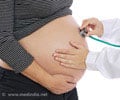Highlights
- Gestational diabetes isn’t permanent but needs to be treated quickly.
- Results of previously conducted studies about association between serum selenium concentration and gestational hyperglycemia are inconsistent.
- A study was undertaken to compare the serum selenium concentration in women with GDM and normal pregnant women via a systematic review and meta-analysis
- The study suggests that serum selenium concentration is significantly lower in pregnant women with gestational hyperglycemia compared to normal pregnant women.
It was recently proposed that lack of an essential trace element namely ‘selenium’ could be associated with the incidence of GDM. Since oxidative stress is linked to etiology and pathogenesis of diabetes mellitus, antioxidants like selenium are proposed to have a protective role.
However, the correlation between selenium status and GDM is still controversial, hence a systematic review and meta-analysis were undertaken to evaluate the relationship between serum selenium and GDM.
Study
- A thorough, systematic literature search was done in some of the published databases such as PubMed, The Cochrane Library and Medline up to August 2016. Once the relevant original studies were sorted out, a manual search was conducted of all the references to these studies.
- Cochrane collaboration tool was used to assess individual study quality for the risk of bias.
- Out of the 44 citations which were identified from three databases, a total of 7 studies involving 569 patients were included for meta-analysis.
- It was seen that serum selenium levels were lower in GDM patients as compared to the healthy controls with statistical significance
- Subgroup analysis was further carried out by geographic site and in different trimesters to obtain thorough information from this meta-analysis.
- For non-Caucasian population, it was seen that serum level of selenium decreased in GDM women especially in the third trimester
- However, the authors indicate that within the Caucasian population, index of selenium serum level showed no statistical significanc
- Diabetes is the most common complication during pregnancy and represents 3.3% of all live births
- Gestational diabetes prevalence is as high as 9.2%, according to a 2014 analysis by CDC
Dietary Recommendations for Gestational Diabetes
- Consume reasonable portion of starchy foods
- Drink one cup of milk at a time
- Avoid fruit juice
- Stay away from sugars
- Don’t skip meals
- Eat a good breakfast
- Limit carbohydrate intake and boost your protein
- Fei-Juan Kong et al; Serum Selenium Level and Gestational Diabetes Mellitus: A Systematic Review and Meta Analysis; Nutrition Journal 2016
- Diabetes During Pregnancy - (http://americanpregnancy.org/pregnancy-complications/diabetes-during-pregnancy/)
- What is Gestational Diabetes? - (http://www.diabetes.org/diabetes-basics/gestational/what-is-gestational-diabetes.html)
- Dietary Recommendations for Gestational Diabetes - (https://www.ucsfhealth.org/education/dietary_recommendations_for_gestational_diabetes/)
















